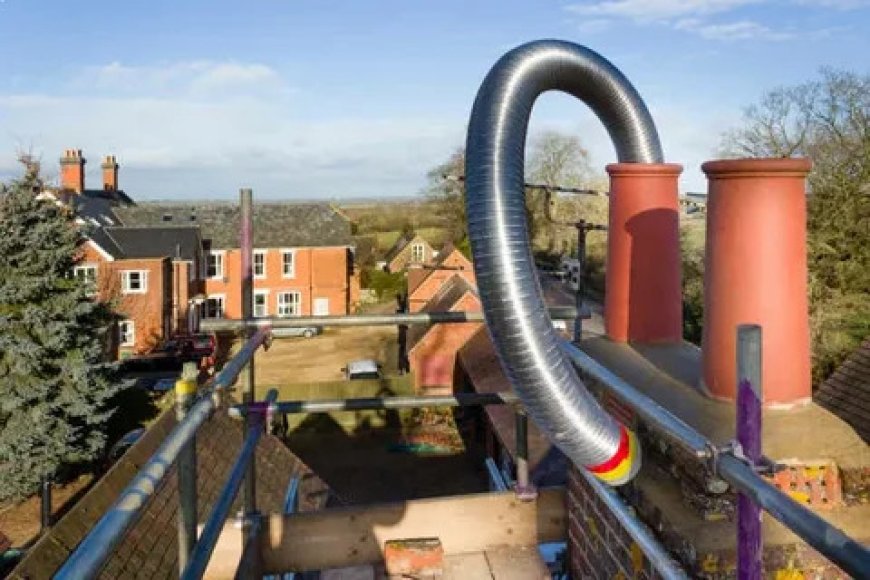How Does Weather Impact a Colorado Springs Chimney Liner
Protect your home with expert Colorado Springs chimney liner services—durable, safe, and professionally installed for lasting performance.

Introduction: More Than Just Bricks and Smoke
If you’ve ever stood outside during a Colorado winter storm or watched the summer sun beat down on your rooftop, you know the weather here can be extreme and unpredictable. Now, imagine what your chimney goes through in those same moments—day after day, season after season. Chimneys aren’t just decorative towers; they’re built to breathe out the heat, smoke, and byproducts of your fireplace or furnace. But hidden inside that chimney is a quiet hero: the chimney liner. And here’s the deal—it doesn’t stay untouched by the weather either. Colorado Springs Chimney Liner has seen firsthand how weather takes a toll on chimney liners, especially over the years.
1.Weather’s Sneaky Ways: How the Elements Break Down a Liner
Rain, snow, wind, and wild temperature swings all play a role in the health—or damage—of your chimney liner. Even though it's tucked inside the chimney structure, the liner still absorbs the wear and tear brought on by Mother Nature. Let’s start with the freeze-thaw cycle. Picture this: moisture sneaks into tiny cracks or joints in your chimney. When the temperature drops, that water freezes, expands, and puts pressure on everything around it. Brick, mortar, and even the liner inside can begin to shift or crack. This cycle repeats all winter long in Colorado, and it slowly chips away at the integrity of the liner. In the summer, blazing heat causes expansion, especially in metal liners. Over time, repeated heating and cooling can warp or weaken the liner. Think of it like bending a paperclip back and forth—it doesn’t break right away, but keep doing it and eventually, it will snap. Humidity is another silent factor. While Colorado isn’t the most humid place, moisture from rainstorms or snowmelt can still seep into your chimney, and if it’s not sealed properly, it may react with soot and creosote inside, forming acids that slowly eat away at the liner.
2.Not Just a Feature—A Safety Must
Let’s talk safety. Chimney liners aren't there for fun. They're vital to keeping your home safe. When the liner is compromised—cracked, eroded, or warped from years of weather exposure—it can’t properly contain the smoke and gases from your fire. That’s when things get risky. Carbon monoxide, an invisible and odorless gas, can start leaking into your home if the liner isn't doing its job. There’s also a higher chance of a chimney fire if creosote builds up in an unlined or damaged flue. In dry, windy Colorado climates, sparks escaping a chimney can be disastrous. Here’s the bottom line: weather damage might not look dangerous at first, but it creates the exact conditions that lead to fire hazards or toxic exposure. Regular inspections and maintenance are key to catching early signs of damage before they become emergencies.
3.What’s This Gonna Cost Me?
We get it—chimney work isn’t exactly exciting to spend money on. But skipping out on liner maintenance or replacement will likely cost more in the long run. Imagine having to rebuild part of your chimney structure because a cracked liner led to major internal damage. Not fun.
| Service | Estimated Cost |
|---|---|
| Chimney Inspection | $150 - $300 |
| Basic Liner Repair | $500 - $1,000 |
| Full Liner Replacement (Stainless Steel) | $2,000 - $4,000 |
| Masonry Repair Due to Liner Damage | $1,000 - $3,500 |
| Emergency Chimney Services | $300 - $1,200 (extra) |
Prices can vary based on height, liner material, and how severe the damage is. But trust us, dealing with liner issues early keeps the costs lower.
4.Don’t Wait for a Fire—Call Emergency Services When Needed
Sometimes things go wrong when you least expect them. A harsh storm knocks bricks loose, or you light a fire and smell something burning that shouldn't be. If anything feels off, that’s your cue to get help—fast. That’s where emergency chimney liner services come in. At Colorado Springs Chimney Liner, we’ve got crews trained to respond quickly and assess weather-related damage before it leads to bigger problems. Whether it's mid-winter or right after a thunderstorm, you shouldn’t wait days to figure out if your chimney is safe.
“It’s better to catch a spark than fight a fire.”
That means preventive maintenance and quick response are your best friends when it comes to chimney safety—especially with Colorado’s unpredictable weather always in play.
FAQs
Q1: How often should I have my chimney inspected in Colorado Springs?
A: Once a year is the rule of thumb, but if you’ve had severe weather or suspect damage, don’t wait—get it checked sooner.
Q2: Do I need to replace my chimney liner every few years?
A: Not always. Good liners, especially stainless steel ones, can last 15–25 years. But weather damage can shorten that lifespan, so inspections are crucial.
Q3: Can I tell if my liner is damaged just by looking?
A: Unfortunately, no. Most liner issues happen inside the chimney where you can’t see. A certified inspection is the only way to be sure.
Q4: What kind of weather causes the most chimney liner damage?
A: Freeze-thaw cycles, high winds, and moisture from rain or snow are the top culprits in Colorado Springs.
Q5: Are emergency chimney services available year-round?
A: Absolutely. We know weather doesn’t care about schedules—that’s why Colorado Springs Chimney Liner offers emergency response every season.
Conclusion: Weather Doesn’t Wait—And Neither Should You
Colorado weather is tough, and your chimney liner feels every single bit of it. From icy mornings to blazing summer heat, the elements slowly wear down even the strongest chimney liners. But the good news is—you don’t have to wait for disaster to strike. With regular checkups, knowing what to look out for, and having a reliable team on hand, you can stay ahead of weather-related damage. Remember, your chimney liner does more than just guide smoke outside. It protects your home, keeps your family safe, and stands guard through every storm. When it’s showing signs of weather wear, don’t guess—call the experts who know exactly what Colorado chimneys go through. Colorado Springs Chimney Liner is always here when you need us—rain, shine, or snow.
Read More: Colorado Springs Chimney Sweep
What's Your Reaction?
 Like
0
Like
0
 Dislike
0
Dislike
0
 Love
0
Love
0
 Funny
0
Funny
0
 Angry
0
Angry
0
 Sad
0
Sad
0
 Wow
0
Wow
0
Related Posts
How Do Professionals Remove pets & Birds Safely in Char...
Mia sebastian Jul 25, 2025 0 1
Rathke's Cleft Cyst Market Growth 2025 - 2032 | Challen...
Yuvraj Patil Jul 25, 2025 0 1
Where to Learn About Negative Pressure Air Duct Cleanin...
Mia sebastian Jul 25, 2025 0 1
Where Can You Find Certified Negative Pressure Air Duct...
Mia sebastian Jul 25, 2025 0 1




































